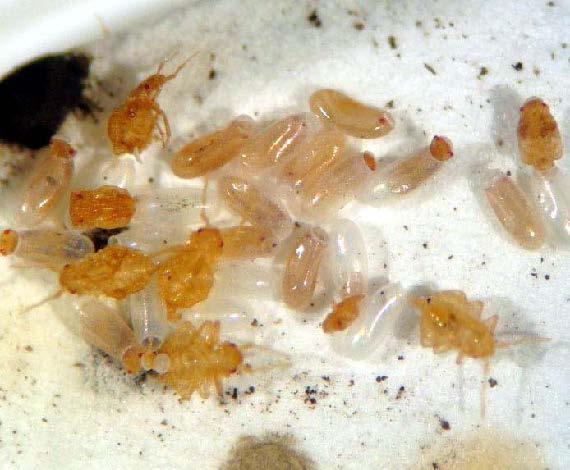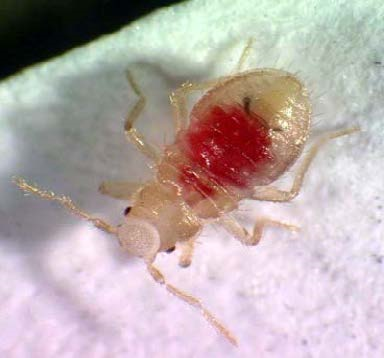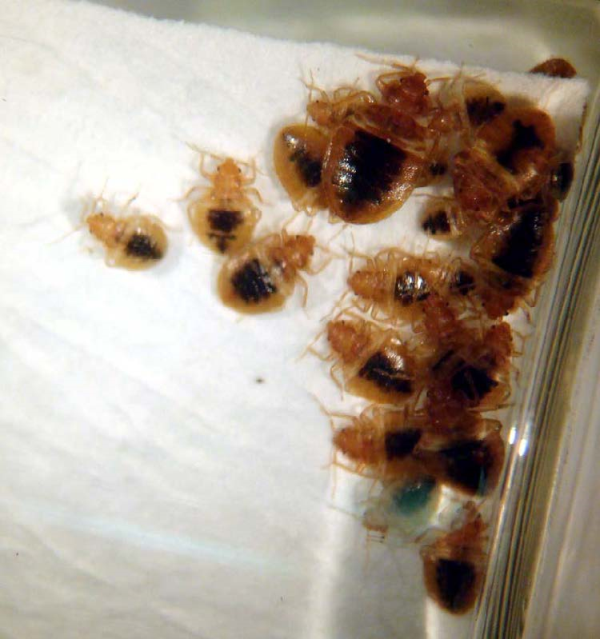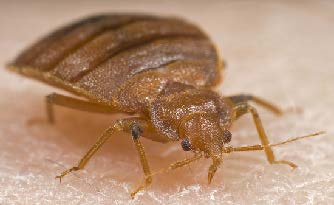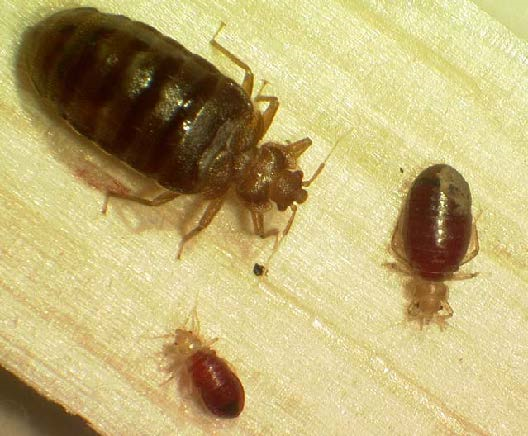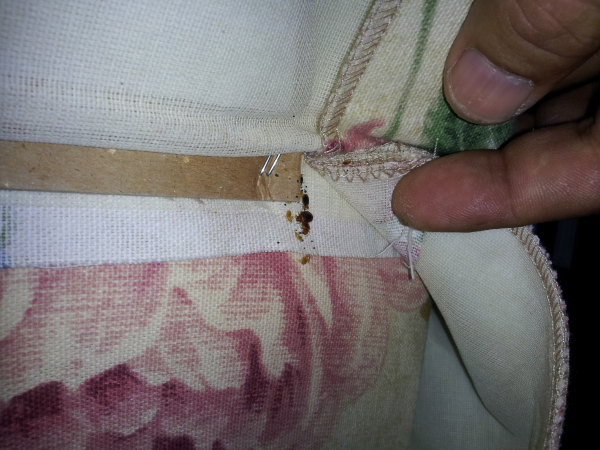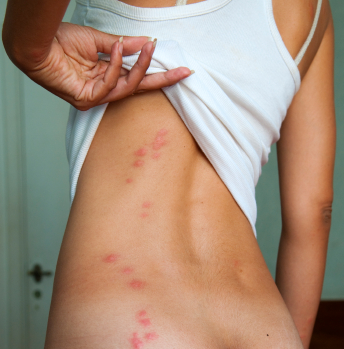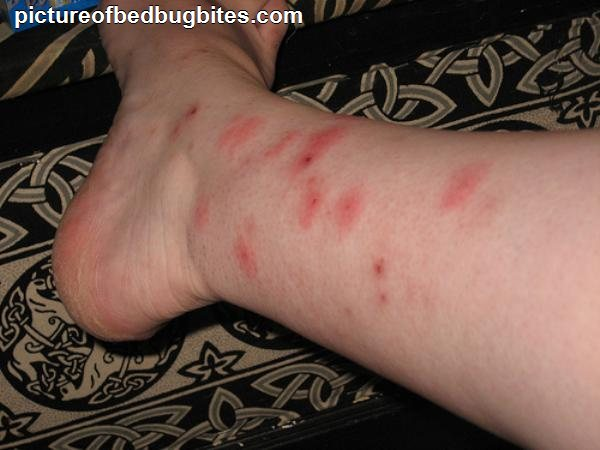April 22-26 is Bed Bug Awareness Week!
Do you know what a bed bug looks like? How do you get bed bugs? What are the chances you or someone you know will get bed bugs this year? Franklin Pest Solutions is dedicated to educating as many people as possible about these and other pests. Education is the first line of defense against these awful bed bugs.
What does a bed bug look like?
Bed bugs are:
- flat
- broad and oval when unfed (like an appleseed)
- swollen and elongated when fed
- adults are 1/4 inch long
- nymphs (young ones) range from 1.3-4.5mm
- clear to see-through yellow as nymphs
- reddish brown as adults and when fed
- eggs are teeny tiny, clear and shiny
Pictures of Bed bugs
Bed bugs hatching from eggs
Bed bug nymph with blood in body
Bed bug aggregation (clustering together)
Bed bug feeding
Adult bed bug with babies engorged with blood
Bed Bug Education
Found all over the world, bed bugs are parasites that live outside the body of a host. (Lice are examples of parasites that live on the body of the host.) They feed on human blood, or other warm-blooded hosts. Bed bugs are very cryptic, meaning they spend a good amount of time hiding in cracks and crevices, and concealing themselves. They tend to scatter when disturbed. Because of their skittish nature, it can be difficult to pin point their presence purely on the tell-tale signs such as bites on your body. They are typically discovered wedged within the tight seams of mattresses, in metal crevices in box springs, and in bed frames, thus their common namesake. Just because they’re called “bed” bugs does not mean they can’t be found in couches, nightstands, window curtain seams or picture frames.
Bed Bug Habits
- Nocturnal (nighttime is typically when you’re sleeping and still for long enough periods of time for them to feed without being disturbed by you)
- Champion hitchhikers (they are transferred on items like luggage. backpacks and purses from person to person)
- Excellent hiders behind baseboards, in the folds of comforters, in furniture near a food source, behind electrical plates, picture frames, in the upholstery of car seats, buses, taxis, etc.
- Usually require 5-10 minutes to take a blood feeding
- Hide for 5-10 days after feeding in seclusion, where they mate and lay eggs
- Do not transmit diseases
- Their bites can spur swollen, itchy bites and sometimes allergic inflammation reactions depending on the person’s sensitivity
What do bed bug bites look like?
Depending on a person’s skin reaction sensitivity, bites can be swollen, raised bumps or you may not be able to tell bites are present at all. Think about how you’d react to a mosquito bite. You’d probably react the same way to a bed bug bite. The one significant difference between a bed bug bite and any other bug bite is the pattern of the bites. Bed bugs tend to seek your heat signature when ready to feed. When undisturbed while feeding, they’ll bite in several places as they walk on the body. The following pictures are examples of these linear patterned bed bug bites.
Remember that because everyone reacts differently to insect bites, they shouldn’t be the determining factor in concluding the presence of a bed bug introduction or infestation.
How to prevent bed bugs
Experts from the National Pest Management Association (NPMA) recommend the following tips to avoid bringing bed bugs home with you.
- Vacuum suitcases after returning from a vacation
- Check your bed sheets for telltale blood spots
- Consider bringing a large plastic trash bag to keep your suitcase in during hotel stays
- Carry a small flashlight to assist you with quick visual inspections
- Never bring second-hand furniture, especially mattresses and box springs, into a home without thoroughly examining for signs of a bed bug infestation (consider a professional inspection if uncomfortable doing this yourself)
- Regularly inspect areas where pets sleep for signs of bed bugs
- Seek professional pest management help if any signs are noticed at any point
Think you might have bed bugs?
{{cta(‘d9be4b8d-6f9d-4edc-b93a-646cbc8e8791’)}}

